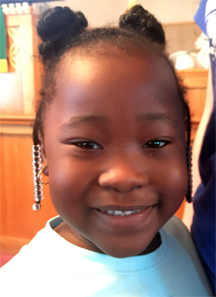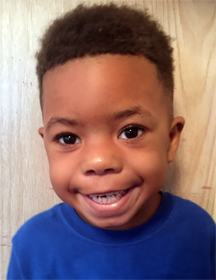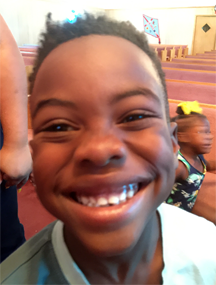Three weeks from tonight we have our children's summer arts show at the Carolina Theater in Allendale, SC. Come and see 3 - 4 - 5 - 6 and 7 year-olds show you what can happen when you enrich brains and hearts through the arts. (And if you're looking for something marvelous to do in the summer of 2019.....) Mid Term Evaluations took place this week at the RICH Learning Summer Arts Camp. Having a blast. Everything we learn is first taught in a song, then a dance (with ASL infused), then art. And once you have music, dance, and art - you have theater!
This is some of what we're learning in seven weeks of song, dance, art and theater - and some of the 300 data points we're imbedding in the arts, then collecting and measuring on video:
What it means to be…
Adventurous
Brave
Confident
Devoted
Encouraging
Spells First Name
Spell Last Name
Count to 10
Say ABCs
Find Letters (on table) A. B. C. D. E. F.
Find Numbers (on tale) 1. 2. 3. 4. 5. 6.
Find Colors (colored feathers) Red. Yellow. Blue. Green. Violet/Purple. Orange.
Find Geometric Shapes (on table) Dot. Line. Triangle. Square. Pentegon. Hexagon.
Find Animal (cut out paper dolls) Ant. Bee. Cat. Dog. Emu. Fox.
Find Food (on computer screen) Apple. Banana Carrot Date. Eggplant. Fig
Can you sing for me?
Can you dance for me?
Show me this emotion?
Sad
Angry
Surprised
Joyous
Can you write these letters? A. B. C. D. E. F.
Can you write these numbers? 1. 2. 3. 4. 5. 6.
Can you write your name?
Can you draw a… Dot. Line. Triangle. Square. Pentegon. Hexagon.
Can you make any words in sign language (ASL)?
1. Red Ant. March. Hello Teacher. Hello Children.
2. Yellow. Bees. Fly. Goodbye Teacher. Goodbye Children.
3. Blue Cats. Claw. I’m Sorry. No Problem.
4. Violet. Dogs. Sit. Thank You. You're Welcome.
5 Green. Emus. Run. Excuse Me. Please.
6. Orange Foxes. Jump. How Are You? I Am Fine.
Extra ASL Vocabulary
Sing. Dance. Act. Art. Paint. Friend.
Learn. Play. Exceptional. Brown. Gold. Silver.
Pink. White. Grey.
Can you speak any Mandarin? Can you say...
Hello Teacher Hello Children. Goodbye Teacher. Goodbye Children. Thank You. You're Welcome. I'm Sorry. No Problem. Excuse Me. Please. How are you? I am fine.
Can you speak any Spanish? Can you say...
Hello Teacher Hello Children. Goodbye Teacher. Goodbye Children. Thank You. You're Welcome. I'm Sorry. No Problem. Excuse Me. Please. How are you? I am fine.
Can you spell these animals? Ant. Bee. Cat. Dog. Emu. Fox.
Can you spell these foods? Apple. Banana. Carrot. Date. Eggplant. Fig.
What can you tell me about...
AMPHIBIANS
A1. Are amphibians cold blooded or warm blooded? (Cold)
A2. Do amphibians breathe through their nose or breath through their skin? (Skin)
A3. Do amphibians lay eggs in the dirt or in the water? (Water)
A4. Do most amphibians have a dry skin or a slimy skin? (Slimy)
A5. Can you name some amphibians? (Frog, Toad, Newt)
A6. Can you name an animal that is NOT an amphibian?
BIRDS
B1. Do all birds lay eggs? (Yes)
B2. Do all birds have feathers? (Yes)
B3. Do all birds have 2 legs? (yes)
B4. Can all birds fly? (No… penguins can't)
B5. Do all birds have beaks? (Yes)
B6. Can some birds use tools? (yes)
INSECTS
C1. How many body parts do insects have? (3)
C2. Can you name them? (Head, Thorax, Abdomen)
C3. How many legs do insects have? (6)
C4. Can you name some insects? (Beetles, Ants, Bees, Butterflies, Moths, Cicadas, Grasshoppers)
C5. Are spiders nsects? (No)
C6. What are spiders if they are not insects? (Arachnids)
What can you tell me about…
MAMMALS
D1. What do little baby mammals drink? (Milk from their mamas)
D2. Are mammals cold blooded or warm blooded? (Warm)
D3. Do mammals have bones and a spine? (Yes)
D4. Do most mammals lay eggs? (No… but a platapus does!)
D5. What are most mammals covered with? (Fur/hair)
D6. Can you name a mammal?
REPTILES
E1. Are reptiles cold blooded or warm blooded? (Cold)
E2. Do reptiles breathe through their nose or breath through their skin? (Skin)
E3. Do reptiles lay eggs in the dirt or in the water? (Dirt/Sand)
E4. Do all reptiles have legs? (No.. Not snakes!)
E5. Can you name an animal that is a reptile? (Lizard, Snake, Crokodile, Turtle)
E6. Can you name an animal that is NOT a reptile?
FISH
F1. Do fish live on land or in the water? (Water)
F2. Do fish have bones? (Yes)
F3. Do fish have fins and tails or arms and legs? (Fins and tails)
F4. Do most fish have skin or scales? (Scales)
F5. Are whales fish? (No, mammals)
F6. Are sharks fish? (Yes)
Find these piano keys?CGBDEFA
Can you play a song on the piano?
Can you dance some ballet dance moves?
arabesque battlement chassed egage eleve fouette
Can you shake my hand firmly, look me in the eye with a big smile and introduction yourself with confidence?



















